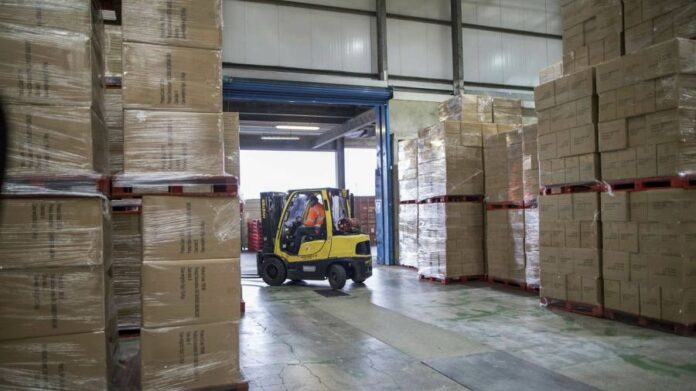The UK could run out of warehouse space within a year, as supply chain disruption and a boom in online shopping propel demand to record levels, according to property agent Cushman & Wakefield.
Available warehouse space in the UK has fallen below 50m square feet, the lowest level since Cushman started tracking the sector in 2009.
That is roughly the same amount of space already taken up by businesses in the first nine months of this year, said Cushman.
Demand for warehouses is being driven by ecommerce companies led by Amazon as well as manufacturing and logistics businesses, as they respond to trends unleashed by the Covid-19 pandemic and Brexit.
Expansion by Amazon and others is eating into the stock of available warehouse space. According to estate agent Savills, the UK has warehouses covering a total of 566m sq ft, but Cushman’s figures suggest the vast majority of this space is already occupied.
Bruno Berretta, who leads logistics research at Cushman, said there was a risk the UK could run out of available space within a year.
“Even though developers have been fairly quick to respond to the shortage . . . when you look at how quickly development is being taken up, there’s probably not enough [warehouse space],” added Berretta.
“Ecommerce and post and parcel [companies] took an average of 6m square feet [a year] between 2015 and 2019. In the last couple of years it has been in excess of 15m square feet a year: that gives a sense of the scale of demand in the sector.”
The rise in online shopping, after the shuttering of high streets during coronavirus lockdowns, is one factor increasing demand for warehouse space.
The proportion of UK retail spend taking place online rose from 19.1 per cent in February 2020, ahead of the first coronavirus lockdown, to a peak of 37.1 per cent in January, before slipping back to 25.9 per cent last month, said the Office for National Statistics.
Amazon alone has taken millions of square feet of warehouse space, accounting for more than half of ecommerce-related usage this year, said Cushman. Others, such as THG, have also expanded.
Another factor behind the demand for storage space are companies whose supply chains have been hit by Brexit and Covid-19.
The UK’s departure from the EU has created friction for businesses on one side serving customers on the other.
“European companies want to be closer to their customers [in the UK] now,” said Berretta. “Supply chains have been re-engineered along borders. You need a more local presence.”
The pandemic, meanwhile, has highlighted the fragility of supply chains built for maximum efficiency. And periodic shortages of everything from face masks to bricks have encouraged manufacturers and retailers to seek more storage space.
Supply chain disruption is also hampering developers’ efforts to build more warehouse space by pushing up the price of building materials and slowing their completion.
The squeeze is not isolated to the UK. The biggest challenge across Europe was finding places on which to build new warehouses, said Emmanuel Van der Stichele, chief executive of Mileway, Blackstone’s European warehouse business, which is expanding to cater for new demand.
“There are lots of complications in planning and making the economics work,” he added.
In the near term, the impact of high demand for warehouse space will be rising costs for those needing storage.
This was likely to trickle down into price increases for consumers, said Berretta, who cautioned there was no quick fix to the imbalance between warehouse space and demand.
“If anything, availability will get worse before it gets better,” he added.
Credit: Source link









